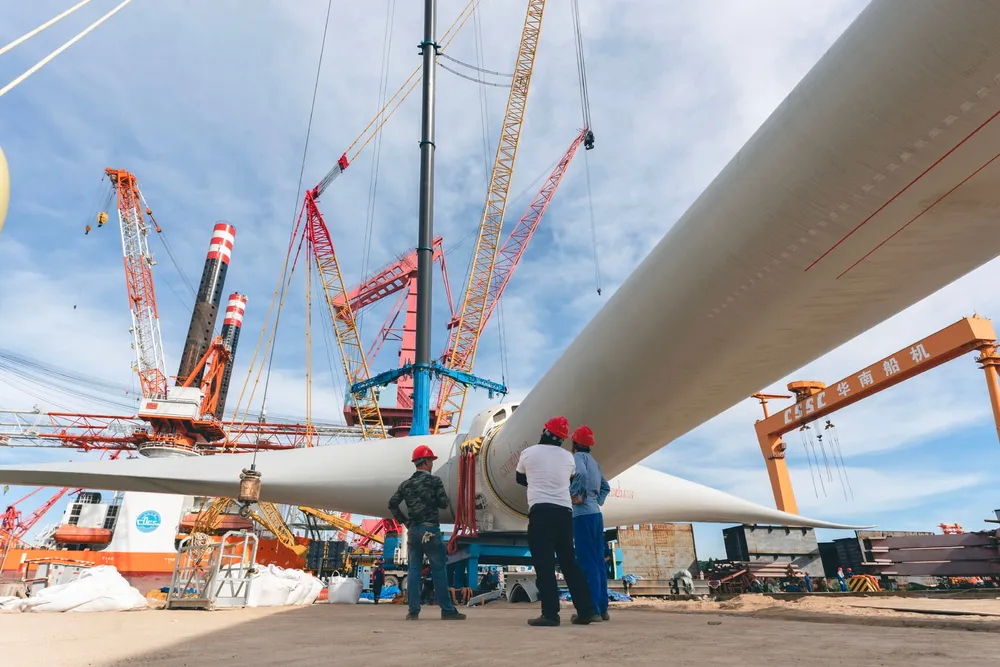Here's what Mingyang must do to sell turbines from planned UK factory to EU
While EU officials take their time to react to Chinese wind turbine giant's plans for Scottish factory, German wind groups are more outspoken

Mingyang’s plan to build a large offshore wind turbine factory in Scotland is logical. After all, the UK is Europe’s largest market for wind at sea.
But such a huge investment only really makes economic sense if the UK plant can also serve the EU market (plus Norway). Even after Brexit, the North Sea has increasingly become a common European energy pond, with turbines, blades and components being shipped to and from one country to another to serve multiple offshore wind projects.
So can the Chinese OEM overcome European cyber and energy security concerns and meet all of the EU’s myriad regulatory requirements?
But offshore wind groups from Germany – Europe’s second largest market, just behind the UK and the world’s third largest – have been quite outspoken.
Observing supplier structure, standards
While new wind turbine production capacity can expand the industrial base in Europe, bring jobs and promote regional value creation, the German Offshore Wind Federation (BWO) stressed that it advocates “fair competition conditions” for all market players. That means – regardless of their origin – they have to stick to legal, social and environmental conditions comparable to those of European companies.
The group said it will closely monitor Mingyang’s developments and evaluate them based on information on financing, site selections, supplier structure and the involvement of skilled workers.
While Scotland lies outside the EU, it is within a European security and legal area that stipulates high requirements for transparency, audit procedures, and safety standards, the BWO stressed. This would include controls and investment reviews.
“These regulations guarantee a high level of security and ensure that non-European manufacturers must also comply with European standards.”
Europe’s offshore wind sector in recent years has been wary of Chinese OEMs pushing into the European market, raising concerns of cybersecurity or fears Asian rivals – some of which they claimed have become big through generous state subsidies – could use their strong position at home to sell turbines in Europe at dumping prices.
Control technology from Siemens?
But more important is control technology and the location of data servers, “regardless of whether the turbines are manufactured in Scotland or China,” she said.
Control systems in offshore wind farms through a combination of sensors, controllers, and data analysis optimise power generation, reduce wear and tear, support the grid, control loads, and manage power flow. Pitch control, adjusting the angle of turbine blades to control rotor speed and optimise the energy yield, is a control technology, just like fatigue load control.
Aware of how sensitive control systems are for Europeans, Mingyang apparently tried to obtain control technology from Siemens, but Würtz couldn’t tell whether that worked out or not.
Another key issue is where SCADA (supervisory control and data acquisition) data are stored, which enables the remote operation of a wind farm from a control centre.
“The question is, which data are stored on Chinese servers? Where are the servers located?” Würtz asked.
If servers containing plant operating data are shut down, a wind farm’s operation could be seriously affected.
“The server's operational location should be in Europe,” Würtz demanded.
Where exactly a factory is located is not something that necessarily needs to be controlled directly by governments, she reckoned. Politicians can find other ways of ensuring Chinese companies meet Europe’s security concerns.
‘Charming’ British approach
“The UK has solved the problem by allowing operators to choose which wind turbines they use, but they bear the risk of having their operating license subsequently revoked if certain developments occur that make this advisable,” she said.
“I find the British approach charming: if international political conflicts escalate, the operating license must be expected to be revoked, at least temporarily.”
Operators have to take that into account, bearing a certain risk if using Chinese turbines – unless OEMs such as Mingyang have smoothed out all the concerns.
“The decisive factor is where the data streams go”, and from where the control system can be influenced, Würtz summed it up.
“Wind farms should not be controlled from China.”
German critical infrastructure
Germany’s economics and energy ministry declined to directly comment on Mingyang’s investment plans.
In an answer to a recent question in parliament about a possible dependency on China on green infrastructure and risks for security policy, Germany’s government detailed that it considers any power plant with a capacity of 104MW or more as critical infrastructure. That would include all offshore wind farms.
The government also said that it is “aware that the use of components from Chinese manufacturers in areas related to energy infrastructure (such as … control technology …) may pose potential IT security risks”.
While this all seems a bit theoretical and vague, Germany’s government seems to have acted behind the scenes.
Hamburg-based asset manager Luxcara faced a lot of pressure after lining up Mingyang turbines for a small German offshore wind project last year, including from a research institute linked to Germany’s defence ministry.
Mingyang certainly is aware of the European security concerns related to control systems and data flows, but how it will act to defuse them could be crucial for the economic viability of a factory in Scotland.
(Copyright)